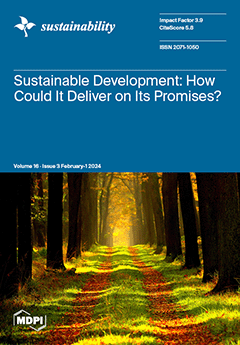Global warming may have a complex effect on soil carbon mineralization across mountain elevations. Elevational zonation governs the soil natural composition of mountain ecosystems due to different temperature conditions. Understanding the response of carbon mineralization to climate change, particularly the temperature sensitivity (
[...] Read more.
Global warming may have a complex effect on soil carbon mineralization across mountain elevations. Elevational zonation governs the soil natural composition of mountain ecosystems due to different temperature conditions. Understanding the response of carbon mineralization to climate change, particularly the temperature sensitivity (
Q10), is crucial for assessing the effects within mountain vertical zones. Despite this, the spatial variation and influencing factors of organic carbon mineralization at these zones remain unclear. We conducted a microcosm study in Changbai Mountain, Northeast China, to examine the response of soil carbon mineralization to warming across six different elevations (1000, 1400, 1600, 1800, 2000, and 2200 m). The soil samples were incubated at 5 °C, 15 °C, and 25 °C for 71 days. The results showed a significant elevation-dependent increase in the rate of soil organic carbon mineralization (
Cmin), with the birch forest exhibiting the highest values.
Q10 varied across elevations, with the highest value (1.57) in the coniferous forest (1400 m), and the lowest (1.32) in the tundra (2200 m). The potential of organic carbon mineralization (
C0) demonstrated an increasing trend from 5 °C to 25 °C across the six elevations. Elevation and soil properties, especially pH, bulk density (BD), and dissolved organic carbon (DOC), emerged as critical factors influencing organic carbon mineralization; notably, elevation played a crucial role. In summary, our findings highlight the common regulatory role of elevation and soil properties in soil carbon mineralization dynamics within the vertical zones. Future research should pay attention to the distinctive features of vegetation zones to analyze how mountain carbon pool function responds to global climate change.
Full article





